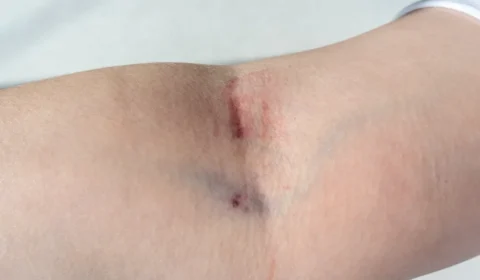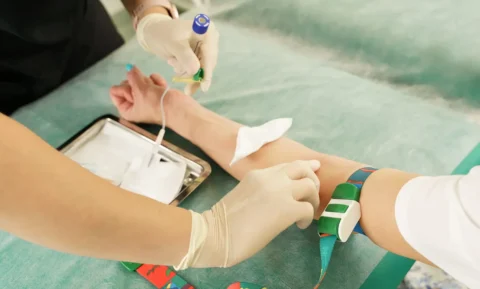Physician assistants are important members of the healthcare community. Their license allows them to diagnose health conditions, develop treatment plans, and prescribe medications to patients. They can specialize in different fields, but many of them explore aesthetic medicine because of the opportunities and benefits that it offers.
So what should physician assistants expect from their medical aesthetics training? Aesthetic training for physician assistants and other healthcare professionals includes courses about aesthetic procedures like Botox, dermal fillers, chemical peels, laser therapy, and more. But before deciding on an aesthetics course, ask your instructor about their accreditation, hands-on training opportunities, course curriculum, and support after the training.
What Physician Assistants Learn During Aesthetic Training
Continuing health sciences and physician assistant studies are important because they allow medical professionals to develop their skill set and offer more treatment options to their patients. Because of the growing demand for aesthetic treatments, more healthcare professionals and medical assistants consider pursuing a career in facial aesthetics and aesthetic medicine.
For medical practitioners who want to join or start their own aesthetic practice, extensive training and certification are required before they offer certain cosmetic procedures. Here are some of the most common topics discussed in basic aesthetics training:
1) Facial Anatomy
In-depth discussions about facial anatomy are extremely important in an aesthetics course. Although a nurse practitioner, registered nurse, or physician assistant is already familiar with the topic, refresher courses are crucial because it allows providers to understand different concerns so they can prescribe the best cosmetic procedure to their patient.
Facial anatomy lessons in a medical aesthetic course focus on identifying the location of facial muscle groups, blood vessels, and nerve networks. With exceptional knowledge of facial anatomy, providers offer their best work to their patients while ensuring their safety during the procedure.
2) Diagnosis and Treatment of Aesthetic Conditions
Different aesthetic conditions and skin care concerns require different solutions. Determining the cause of the patient’s skin issues allows aestheticians to recommend a safe and effective treatment that doesn’t require plastic surgery.
Aesthetic medicine courses teach registered nurses, physicians, physician assistants, and other participants how to recognize the signs and symptoms of some aesthetic conditions. They also train aspiring aestheticians to analyze the situation and come up with a treatment plan that works for their case.
3) Botox Training
Botox cosmetic injections are a staple in most medical spas and dermatology clinics. It’s a well-loved anti-aging treatment that gives patients amazing results without the need for cosmetic surgery.
Botox is also one of the most important treatments that an aesthetician should have certification for. Botox is the number one minimally invasive cosmetic treatment with millions of procedures performed every year in different parts of the country. Earning a Botox certification allows a medical spa to offer neurotoxin cosmetic injectables for certain aesthetic and medical concerns.
Basic Botox training usually includes topics like the history and pharmacology of different botulinum toxin injections (Botox, Dysport, Xeomin, and more). It also teaches providers different treatment techniques to perform the procedure safely and effectively according to FDA and state regulations.
Medical professionals may also take advanced training courses for Botox injection, but they need to complete basic training and have at least 6 months of experience in administering the treatment to live patients first.
4) Dermal Filler Training
Dermal fillers are also in-demand because of their ability to smooth wrinkles and restore facial volume without the need for reconstructive surgery. The cosmetic injectables come in different types and brands that work best for specific treatment areas.
A dermal filler certification teaches medical professionals when to use certain dermal fillers to treat their patients. It also shows them the proper injection technique to help them perform each procedure safely and effectively.
Dermal filler training courses can be basic or advanced. Basic courses deal with general information about different types of soft tissue fillers as well as easy dermal filler treatments. On the other hand, advanced training focuses on more complicated filler treatments like tear trough filler and off-label uses. Like advanced Botox cosmetic injections, a medical professional needs to finish basic courses and have prior experience first before signing up for advanced training.
5) Chemical Peel Training
A chemical peel treatment is another minimally invasive but profitable aesthetic procedure that aspiring aestheticians should offer in their medical spa or skin clinic. Some patients might not specifically ask for chemical peels, but a medical professional may recommend this treatment for patients who deal with hyperpigmentation, acne scars, melasma, and other common skin problems.
Chemical peel treatments come in different types with varying exfoliating strengths. A chemical peel training course teaches providers about the chemicals used in the treatment and when it’s best to apply them on the patient’s face. This kind of certification assures patients that their provider is skilled and experienced in providing safe and effective chemical peel treatments.
6) Laser Treatment
Laser technology has a wide range of aesthetic applications that providers use to treat their patients. This revolutionary procedure can be used for laser hair removal, laser tattoo removal, and laser skin rejuvenation treatments.
One of the first things that medical professionals learn about during their aesthetic laser training is that there are different types of lasers meant for different skin concerns. The course teaches them about these laser types so they can treat patients with the right laser technology. Aesthetic laser training also tackles laser physics and FDA safety guidelines to help providers offer safer and more effective laser treatments to their clients.
What to Ask Your Aesthetics Training Instructor
Aesthetic training courses can take up a lot of time and money, so it’s normal to make sure that you’re investing in an experience that benefits your practice in the long run. Before deciding on an aesthetics training, ask the instructor these questions first:
What’s the Instructor’s Accreditation?
Learning injection techniques and treatment tips from highly-experienced instructors is important for practitioners who want to innovate and offer better treatments to their patients. With the rise of Botox injections, dermal fillers, and other similar procedures come aesthetic professionals specializing in them and pioneering in even more cosmetic innovations as demands arise.
When it comes to training yourself for administering minimally invasive cosmetic treatments, always remember to ask if the creators of the training course are qualified and what kind of training and experience they had before signing up.
Do They Offer Hands-on Training?
Many institutions and training facilities offer online aesthetics courses since many medical professionals find it hard to squeeze additional training into their busy schedules. Although online training has its perks like letting physician assistants learn at their own pace, it’s rare for them to experience hands-on training.
Lectures and didactic lessons are informative, but hands-on training gives participants a glimpse of real-life situations with live patients. This challenges them to think critically, assess the situation, and develop a treatment plan based on their diagnosis. When looking for aesthetics courses, ask the instructor if they offer hands-on training to significantly improve your skills.
What’s Included in the Curriculum?
The topics included in the aesthetics course are also one of the most important things that participants should pay attention to. A well-designed curriculum should have extensive lessons about facial anatomy and an in-depth explanation of common aesthetic treatments like Botox and dermal fillers.
The curriculum should also be based on information from trusted sources and solid clinical evidence. It must also reflect the latest advancements and discoveries in the field of aesthetic medicine.
Do They Provide Support After the Aesthetics Training?
Learning about different aesthetic treatments isn’t limited to the corners of a training facility. Aestheticians encounter unique aesthetic or medical cases all the time, so they need to have a support system or network of other practitioners they can consult or talk to.
Many institutions provide support to aesthetics training participants by introducing them to a community of other aestheticians and practitioners, allowing them to continuously learn even after earning their certification.
4 Tips to Become the Best Aesthetic Physician Assistant
Becoming an aesthetic physician assistant isn’t easy, but the hard work and investments put into this career path eventually become worth it. Here are some of the best tips you can follow to become a successful physician assistant in the medical aesthetics industry:
1) Go Beyond the Courses
Aside from aesthetic courses and hands-on training, physician assistants should continue looking for other ways to gain more knowledge in aesthetic medicine. Physician assistants can try to sign up for webinars, attend conferences, and subscribe to aesthetic journals.
2) Get More Exposure
Shadowing a dermatologist, plastic surgeon, or aesthetician can give physician assistants the exposure to medical aesthetics that theoretical lessons can’t easily provide. By working with other professionals or treating them as a mentor, training aestheticians can observe how they talk to patients and how they perform aesthetic treatments.
3) Look Into Obtaining Different Certifications
There are lots of different aesthetic training certificates that physician assistants are qualified for. Signing up for these courses and earning certifications allows them to expand their skill set and offer more treatment options for their patients.
4) Apply for Jobs That Offer Continued Training
When looking for job opportunities, try looking for practitioners who are willing to take new graduates under their wing. This allows physician assistants to learn new techniques from experienced medical professionals while exposing themselves to real-life patients and cases.
World-Class Online Aesthetic Courses at FACE Med Store
FACE Med Store is a reliable supplier of quality medical tools and equipment for hundreds of healthcare providers in the country. We also offer online aesthetic courses with CME credits to help physician assistants, nurse practitioners, and other medical professionals pursue a career in aesthetic medicine.
Your medical career shouldn’t stop at med school. Add more to your clinical skill set and know more about our expertly-designed online aesthetic courses by calling us today. You may also visit our website for beauty and medical tools and supplies your practice might need.






